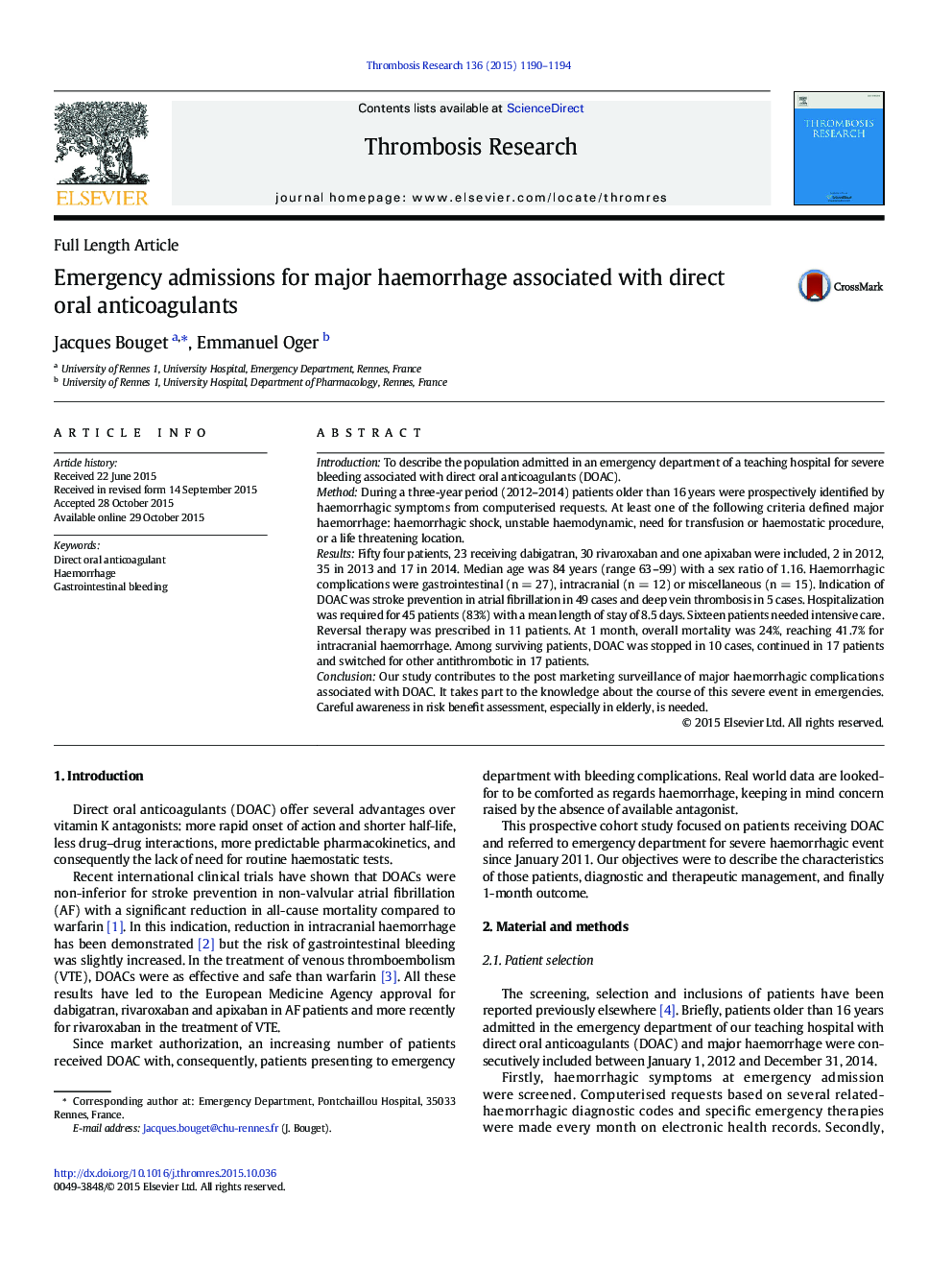| کد مقاله | کد نشریه | سال انتشار | مقاله انگلیسی | نسخه تمام متن |
|---|---|---|---|---|
| 6001021 | 1182942 | 2015 | 5 صفحه PDF | دانلود رایگان |
- Most severe bleeding was gastrointestinal (50%) with usual causative lesions.
- Intracranial haemorrhages represent 22% of severe bleeding.
- Patients were old (mean age 84) with impaired renal function.
- Reversal therapy was based on 4-factor prothrombin complex concentrates (PCC) or FEIBA.
IntroductionTo describe the population admitted in an emergency department of a teaching hospital for severe bleeding associated with direct oral anticoagulants (DOAC).MethodDuring a three-year period (2012-2014) patients older than 16 years were prospectively identified by haemorrhagic symptoms from computerised requests. At least one of the following criteria defined major haemorrhage: haemorrhagic shock, unstable haemodynamic, need for transfusion or haemostatic procedure, or a life threatening location.ResultsFifty four patients, 23 receiving dabigatran, 30 rivaroxaban and one apixaban were included, 2 in 2012, 35 in 2013 and 17 in 2014. Median age was 84 years (range 63-99) with a sex ratio of 1.16. Haemorrhagic complications were gastrointestinal (n = 27), intracranial (n = 12) or miscellaneous (n = 15). Indication of DOAC was stroke prevention in atrial fibrillation in 49 cases and deep vein thrombosis in 5 cases. Hospitalization was required for 45 patients (83%) with a mean length of stay of 8.5 days. Sixteen patients needed intensive care. Reversal therapy was prescribed in 11 patients. At 1 month, overall mortality was 24%, reaching 41.7% for intracranial haemorrhage. Among surviving patients, DOAC was stopped in 10 cases, continued in 17 patients and switched for other antithrombotic in 17 patients.ConclusionOur study contributes to the post marketing surveillance of major haemorrhagic complications associated with DOAC. It takes part to the knowledge about the course of this severe event in emergencies. Careful awareness in risk benefit assessment, especially in elderly, is needed.
Journal: Thrombosis Research - Volume 136, Issue 6, December 2015, Pages 1190-1194
